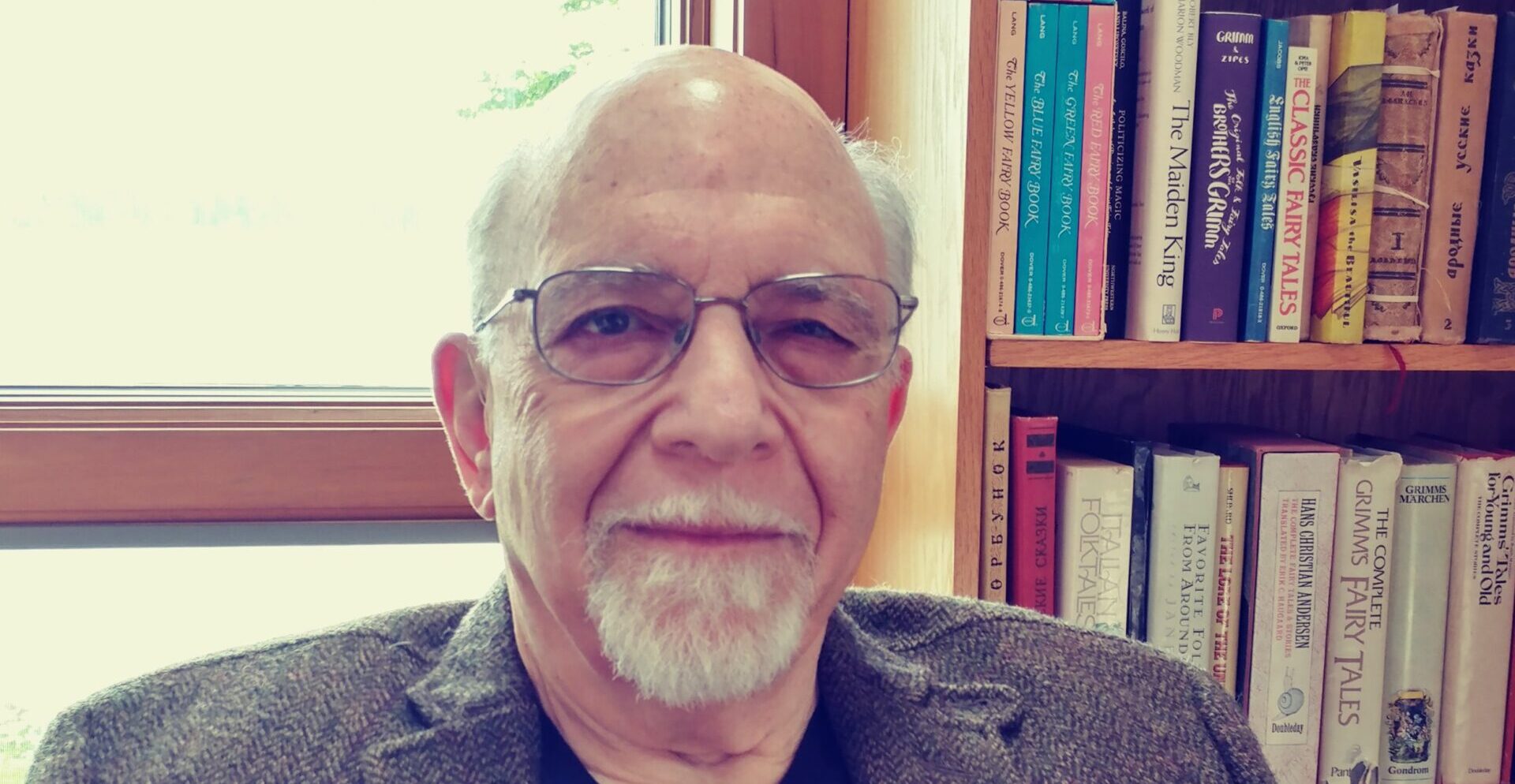Who was Nathan Schwartz-Salant?

1.1 Nathan Schwartz-Salant’s multidisciplinary approach
Nathan Schwartz-Salant, an American Jungian analyst and author, has made significant contributions to the field of depth psychology, offering innovative perspectives on the complex dynamics of the human psyche. His work spans a wide range of topics, including alchemy, narcissism, borderline personality disorder, and the creative process, reflecting his multidisciplinary approach to understanding the mind. Schwartz-Salant’s unique blend of Jungian psychology, psychoanalysis, and spiritual traditions has earned him recognition as a pioneering thinker in the realm of psychological transformation.
1.2 Schwartz-Salant’s role in advancing Jungian thought
Schwartz-Salant’s work has played a vital role in advancing Jungian thought and expanding its applications to contemporary clinical practice. Through his writings and teachings, he has shed light on the intricate processes of individuation, the integration of the shadow, and the healing potential of the alchemical imagination. His contributions have helped to bridge the gap between classical Jungian concepts and modern psychological theories, making them more accessible and relevant to practitioners and scholars alike.
The Alchemical Imagination
2.1 The relevance of alchemy for depth psychology
One of Schwartz-Salant’s most significant contributions to depth psychology is his exploration of the alchemical imagination. He argues that the ancient practice of alchemy, with its rich symbolism and transformative processes, offers a powerful framework for understanding the depths of the human psyche. By drawing parallels between the stages of the alchemical opus and the process of individuation, Schwartz-Salant illuminates the potential for psychological growth and healing.
2.2 The transformative power of symbols
Central to Schwartz-Salant’s approach is his emphasis on the transformative power of symbols. He believes that the images, dreams, and fantasies that emerge from the unconscious are not merely random products of the mind, but rather meaningful expressions of the psyche’s inherent wisdom. By engaging with these symbols through active imagination, dream analysis, and other depth psychological techniques, individuals can tap into a source of guidance and insight that can facilitate their journey towards wholeness.
2.3 The integration of spiritual traditions
Schwartz-Salant’s work also reflects a deep appreciation for the wisdom of spiritual traditions. He draws on insights from Buddhism, Hinduism, and other contemplative practices to enrich his understanding of the psyche and the process of transformation. By integrating these perspectives with Jungian concepts, Schwartz-Salant offers a more holistic and comprehensive approach to healing that acknowledges the spiritual dimensions of human experience.
Narcissism and Borderline Personality Disorder
3.1 The dynamics of narcissistic and borderline states
Another area in which Schwartz-Salant has made significant contributions is the study of narcissism and borderline personality disorder. He has written extensively on the developmental origins and psychological dynamics of these conditions, offering valuable insights for clinicians working with these challenging populations. Schwartz-Salant’s approach emphasizes the importance of understanding the early relational trauma and defensive structures that underlie narcissistic and borderline states.
3.2 The role of the therapist in facilitating healing
Schwartz-Salant’s work also highlights the crucial role of the therapist in facilitating healing for individuals with narcissistic and borderline disorders. He argues that the therapeutic relationship itself can serve as a transformative container, providing a safe and supportive space for the exploration of painful emotions and experiences. By modeling empathy, attunement, and healthy boundaries, the therapist can help the client to develop a more secure sense of self and to build the capacity for meaningful relationships.
3.3 The importance of integrating the shadow
In his approach to working with narcissistic and borderline states, Schwartz-Salant emphasizes the importance of integrating the shadow. He believes that these conditions often arise from the splitting off and projection of unacknowledged aspects of the self, leading to a fragmented and unstable sense of identity. By helping clients to confront and embrace their shadow qualities, therapists can facilitate a more authentic and whole sense of self, laying the foundation for lasting psychological growth and change.
The Creative Process and Psychological Transformation
4.1 The link between creativity and individuation
Schwartz-Salant’s work also explores the deep connection between creativity and psychological transformation. He argues that the creative process, whether in art, music, writing, or other forms of expression, is intimately linked to the process of individuation. By engaging in creative activities, individuals can access the depths of their psyche, confront their inner conflicts and shadows, and ultimately achieve a greater sense of wholeness and self-realization.
4.2 The role of the unconscious in the creative process
Central to Schwartz-Salant’s understanding of creativity is his emphasis on the role of the unconscious. He believes that the most powerful and transformative works of art arise from a deep engagement with the images, symbols, and energies of the unconscious mind. By surrendering to the creative impulse and allowing the unconscious to guide the process, individuals can tap into a source of profound wisdom and healing.
4.3 The potential for healing through creativity
Schwartz-Salant’s work also highlights the potential for healing through creativity. He argues that the creative process can serve as a pathway for working through psychological conflicts, integrating split-off aspects of the self, and achieving a greater sense of wholeness and well-being. By providing a safe and expressive outlet for the exploration of inner experience, creative activities can facilitate deep psychological transformation and growth.
Clinical Applications and Implications
5.1 Schwartz-Salant’s influence on Jungian analysis
Schwartz-Salant’s contributions have had a significant impact on the field of Jungian analysis. His innovative perspectives on narcissism, borderline personality disorder, and the alchemical imagination have expanded the scope of Jungian thought and enriched its clinical applications. Many contemporary Jungian analysts have been influenced by Schwartz-Salant’s work, integrating his insights into their own therapeutic approaches and theoretical frameworks.
5.2 The relevance of Schwartz-Salant’s work for other therapeutic modalities
While rooted in the Jungian tradition, Schwartz-Salant’s ideas have relevance for a wide range of therapeutic modalities. His emphasis on the transformative power of symbols, the importance of the therapeutic relationship, and the potential for healing through creativity can inform and enrich the work of practitioners from diverse backgrounds. By bridging the gap between depth psychology and other approaches, Schwartz-Salant’s work has helped to foster a more integrative and holistic understanding of psychological healing.
5.3 The implications for personal growth and development
Beyond its clinical applications, Schwartz-Salant’s work has important implications for personal growth and development. His insights into the process of individuation, the integration of the shadow, and the role of creativity in psychological transformation can serve as valuable guides for individuals seeking to deepen their self-awareness and achieve greater wholeness. By engaging with the symbols and energies of the unconscious, and by embracing the challenges and opportunities of the creative process, individuals can embark on a profound journey of self-discovery and healing.
Challenges and Criticisms
6.1 The complexity of Schwartz-Salant’s ideas
One of the challenges in engaging with Schwartz-Salant’s work is the complexity of his ideas. His writing often assumes a deep familiarity with Jungian concepts and can be dense and challenging for those new to depth psychology. The integration of alchemical symbolism and spiritual traditions adds a further layer of complexity, requiring a willingness to engage with unfamiliar and sometimes esoteric material.
6.2 The need for empirical validation
Another potential criticism of Schwartz-Salant’s work is the need for empirical validation. While his ideas are grounded in clinical experience and theoretical understanding, some may argue that they lack the rigorous scientific evidence demanded by contemporary psychological research. However, the subjective and symbolic nature of depth psychological work often resists easy quantification, and the value of Schwartz-Salant’s contributions may lie more in their clinical utility and transformative potential than in their empirical verifiability.
6.3 The risk of over-interpretation
Finally, there is a risk of over-interpretation in engaging with Schwartz-Salant’s work, particularly in relation to alchemical symbolism and spiritual traditions. The temptation to find meaning and significance in every image or dream can lead to a kind of symbolic reductionism that loses sight of the individual’s unique experience and context. It is important to approach Schwartz-Salant’s ideas with a critical and discerning eye, using them as tools for exploration rather than as dogmatic truths.
Future Directions and Implications
7.1 The integration of Schwartz-Salant’s work with contemporary research
As the field of depth psychology continues to evolve, there are exciting opportunities for integrating Schwartz-Salant’s work with contemporary research in areas such as neuroscience, attachment theory, and trauma studies. By bridging the gap between Jungian concepts and current scientific understanding, researchers and clinicians can develop more effective and evidence-based approaches to psychological healing and transformation.
7.2 The potential for cross-cultural dialogue and collaboration
Schwartz-Salant’s integration of spiritual traditions and alchemical symbolism also opens up possibilities for cross-cultural dialogue and collaboration. By exploring the common themes and patterns that emerge across different wisdom traditions, depth psychologists can develop a more inclusive and global understanding of the human psyche. This can lead to innovative approaches to healing that draw on the richness and diversity of the world’s cultural heritage.
7.3 The importance of Schwartz-Salant’s legacy for the future of depth psychology
Ultimately, Schwartz-Salant’s legacy lies in his unwavering commitment to the transformative power of the psyche. His work serves as a reminder of the depth and complexity of the human mind, and of the potential for healing and growth that lies within each individual. As the field of depth psychology continues to evolve, Schwartz-Salant’s contributions will undoubtedly serve as a guiding light, inspiring new generations of clinicians and researchers to explore the mysteries of the unconscious and to help individuals achieve greater wholeness and well-being.
Ongoing Discovery
8.1 Recapitulation of Schwartz-Salant’s key contributions
\Nathan Schwartz-Salant’s work represents a significant contribution to the field of depth psychology. His multidisciplinary approach, which encompasses Jungian psychology, alchemy, and spiritual traditions, has provided a rich and innovative framework for understanding the complexities of the human psyche. Schwartz-Salant’s insights into narcissism, borderline personality disorder, and the creative process have expanded the scope of Jungian thought and enriched its clinical applications.
8.2 Schwartz-Salant’s place in the history of depth psychology
Schwartz-Salant’s work can be seen as part of a broader movement within depth psychology that seeks to integrate the wisdom of ancient traditions with the insights of modern psychology. Like other pioneering figures such as Carl Jung, Marie-Louise von Franz, and Edward Edinger, Schwartz-Salant has helped to bridge the gap between the past and the present, revealing the enduring relevance of archetypal patterns and symbolic processes for understanding the human condition.
8.3 The enduring relevance of Schwartz-Salant’s vision for psychological healing
As we move deeper into the 21st century, the enduring relevance of Schwartz-Salant’s vision for psychological healing is more apparent than ever. In a world that is increasingly complex, fragmented, and uncertain, his emphasis on the transformative power of the psyche offers a beacon of hope and possibility. By engaging with the depths of the unconscious, and by embracing the challenges and opportunities of the individuation process, individuals can achieve a greater sense of meaning, purpose, and wholeness. Schwartz-Salant’s work serves as an invitation to embark on this journey of self-discovery, and to realize the vast potential that lies within each of us.
References
Schwartz-Salant, N. (1982). Narcissism and character transformation: The psychology of narcissistic character disorders. Inner City Books.
Schwartz-Salant, N. (1989). The borderline personality: Vision and healing. Chiron Publications.
Schwartz-Salant, N. (1995). Jung on alchemy. Princeton University Press.
Schwartz-Salant, N. (1998). The mystery of human relationship: Alchemy and the transformation of the self. Routledge.
Schwartz-Salant, N. (2007). The Black Nightgown: The Fusional Complex and the Unlived Life. Chiron Publications.
Schwartz-Salant, N., & Stein, M. (Eds.). (1991). Liminality and transitional phenomena. Chiron Publications.
Edinger, E. F. (1985). Anatomy of the psyche: Alchemical symbolism in psychotherapy. Open Court Publishing.
Jung, C. G. (1968). Psychology and alchemy (R. F. C. Hull, Trans.). Princeton University Press.
von Franz, M.-L. (1980). Alchemy: An introduction to the symbolism and the psychology. Inner City Books.
Wiener, J. (2009). The therapeutic relationship: Transference, countertransference, and the making of meaning. Texas A&M University Press.
Read More Depth Psychology Articles:
Taproot Therapy Collective Podcast
Jungian Analysts
Anthropology

























0 Comments